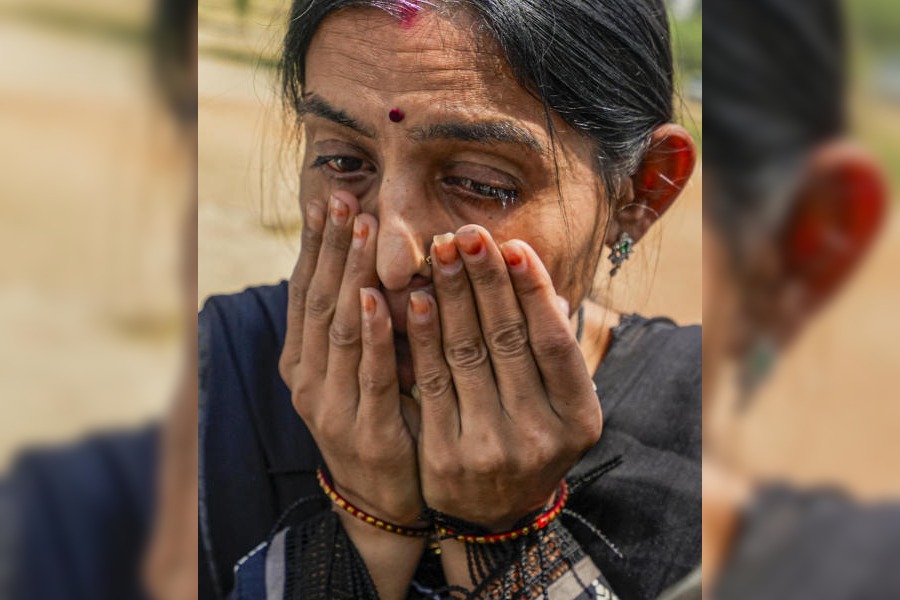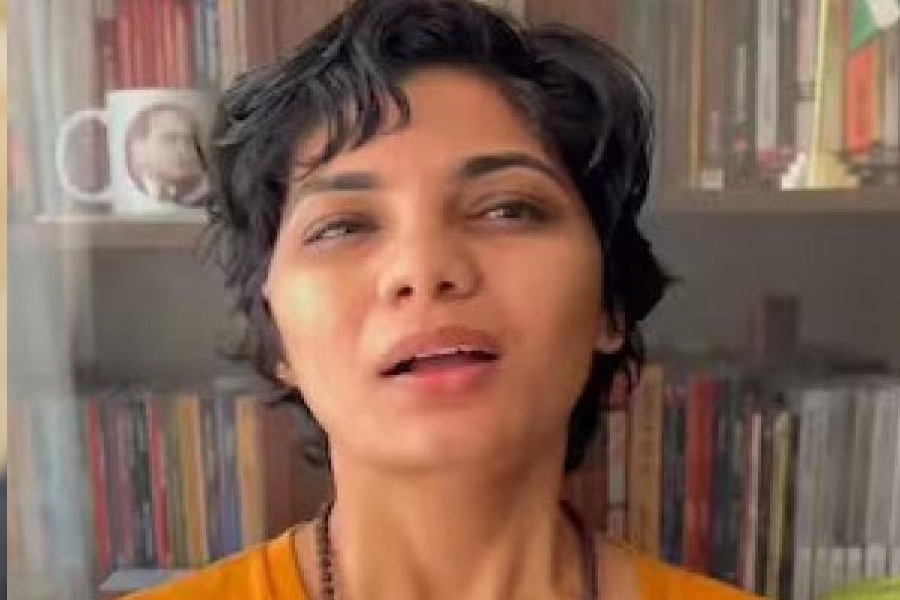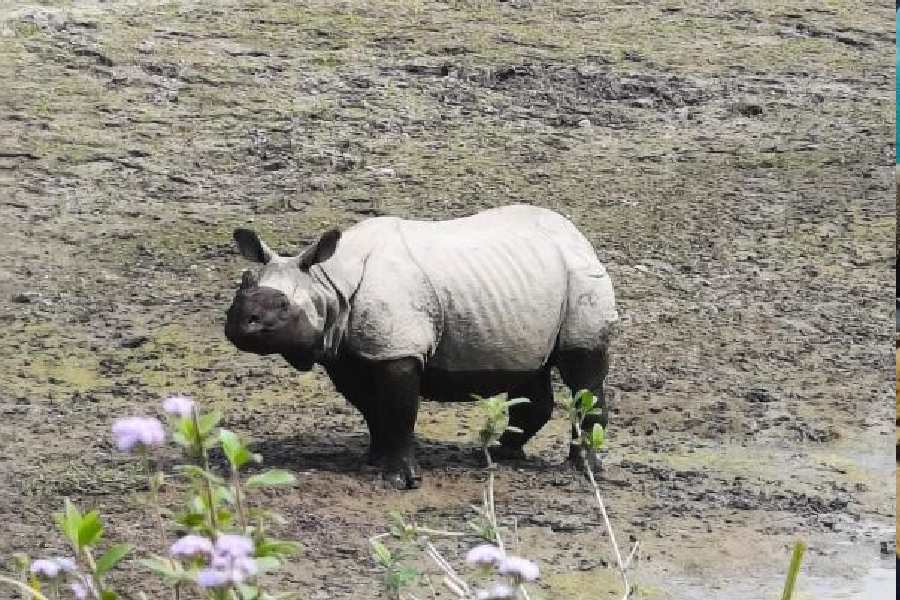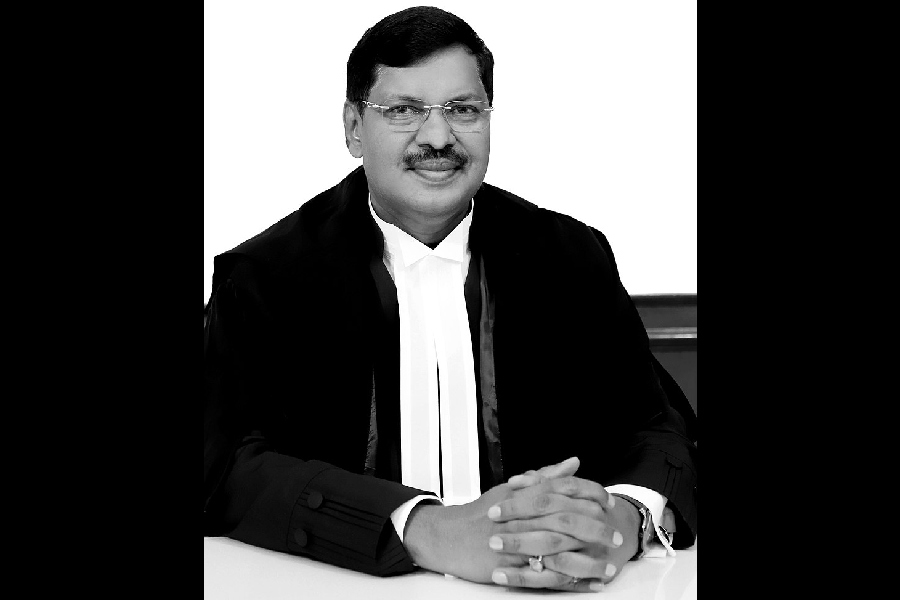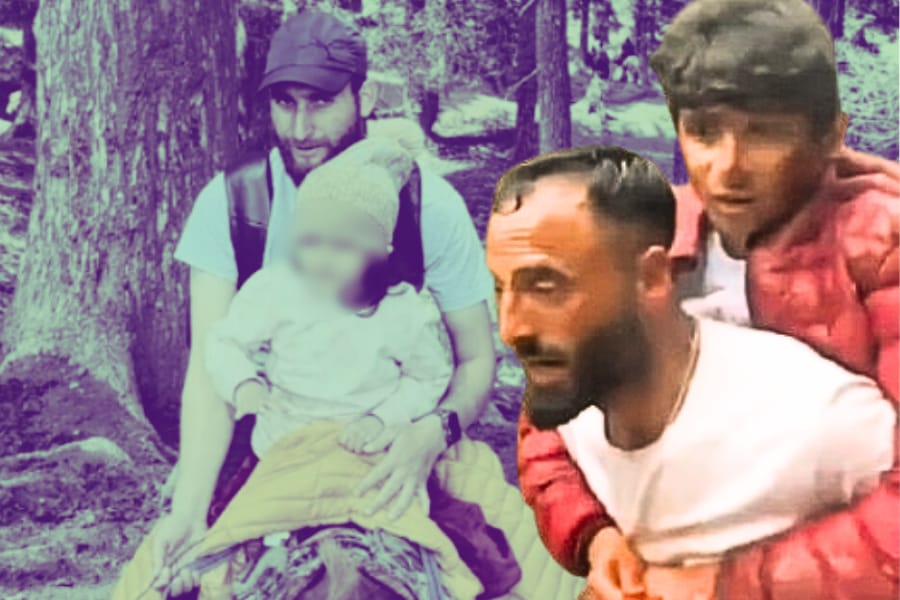 |
 |
| SHADES OF REALISM: (top) A painting by Wang Guangyi; (above) a painting by Yue Minjun; (below) a lane flanked by artists’ cottages in Songzhuang,Pic: Ashis Chakrabarti |
 |
“In the beginning was a female nude,” Meng Zhigang says, pouring green tea into my cup. We sit at his home-cum-studio on the second floor of an old building. In one corner of the ground outside is a pile of coal that he will need to keep the home warm in the coming months.
Winter is still a few weeks away, but the wind outside is already cold at Songzhuang, the biggest “artists’ village” in China. Though only 30 miles east of Beijing, the place still doesn’t have central heating, but that does nothing to dampen the spirit of the artists, young and old, who flock to this holy land from all corners of the Middle Kingdom.
The female nude Meng mentioned is, to many, the beginning of contemporary Chinese art. It is a dramatic story, but then the drama of Chinese history is always reflected in the arts.
In 1979, China’s ministry of light industry commissioned a group of artists to decorate the new Beijing airport. The project was given such importance that top leaders of the country, including Deng Xiaoping, attended its opening ceremony. But Yuan Yunsheng’s mural stirred such a political controversy over the boundaries of art that the mural was hidden from the public until 1990. It was still early days for China’s reform and opening up and today’s brave new China was still a long way off.
What made the mural so controversial was the naked figure of a woman bathing during the “Water Splashing Festival,” a traditional event in the life of the Dai community in southwest China’s Yunnan province.
Showing a naked figure in a piece of art no longer makes a story, let alone history, in today’s China. “In fact, many art critics today would doubt if that female nude was the beginning,” says one of Meng’s friends whose modest farmhouse we visit later in the day. “Many today believe the beginning was the Stars Art Group exhibition in a park (in Beijing) in 1979 that proclaimed, ‘Kathe Kollwitz is our banner bearer, Pablo Picasso is our pioneer.’ The police dispersed the artists and the exhibition was denounced as illegal.
In Songzhuang, though, all that seems to belong to a dim and distant era in Chinese art and politics. It isn’t really a “village” any more with roads, cars, apartment blocks, hotels, restaurants and shopping complexes turning it into a semi-urban centre. But it is still a world away from Beijing that is transforming its skyline and life at a frenetic pace.
Out on its near-deserted roads in an early October afternoon, it is difficult to believe this “village” houses the largest artist community in China, where some 3,000 artists live and work. Most of them sleep away the day and the place comes alive at night when the artists work in their studios.
Almost all the big names in contemporary Chinese art — Li Xian-ting, whom everyone here calls the “Godfather of modern Chinese art,” Fang Lijun, Wang Guangyi,Yue Minjun, Zhang Xiaogang, Wu Shanzhuan, Liu Dahong and Liu Xiaodong have their homes and studios here or at 798, the “Art District” in Beijing that came up in the late 1990s in the dilapidated sheds and grounds of what was once an arms and ammunition factory.
Incidentally, Liu Xiaodong became the most expensive Chinese artist in the market when his series of paintings, “Battlefield Realism: Eighteen Arhats” was sold at the Sotheby’s auction in Hong Kong last April for more than $ 7 million. That is a big leap forward from the last record — $ 4.3 million for Yue Minjun’s painting, “Giggling Yue Dressed as a Pope” at Sotheby’s London auction in June, 2007. Yue’s giggling self-portraits, like Fang Lijun’s grinning, bald people, are among the best known landmarks of contemporary Chinese art, capturing what is generally called the “cynical realism” of the post-Cultural Revolution era. Many of these big names were products of the New Wave movement of 1985.
But Songzhuang is much more than these big names and fabulous prices that the best in Chinese art has been fetching since its big international exposure at the Venice Biennale of 1999. What’s perhaps more interesting is how it has become the promised land for every aspiring artist in China.
There are other artist “villages” elsewhere in China — some of the other well-known ones are around cities like Shanghai, Chongqing and Chengdu. Even around Beijing you have 798, with its 400 plus galleries and studios, and Fangcaodi and Suojiacun villages.
But it’s to Songzhuang young and obscure artists come in the hope of making it big some day. Or simply to be part of this world of freedom and creative living away from the stresses and bustle of the big city.
Like the young woman I met another afternoon in the summer of last year when I first visited Songzhuang in the company of Amitava Bhattacharyya, a visiting painter from Calcutta. She came all the way from Hunan, Mao Zedong’s home province, to live here with her schoolgoing daughter. Or, like Meng himself who came three years ago from distant Fujian in southeast China.
Li Xuelai, whom Meng takes me to meet, has seen it all happening. He is an official of the culture department of the Xiaopu village, which is the nucleus of Songzhuang. Sitting in his room in the office of the Xiaopu village government, he tells me how artists started coming in and living in homes rented from farmers since 1993-94. Xiaopu alone now has 1,000 artists living there, he says. “In 2004, there were only 100 artists. Then it was a tide”, he recalls. The entire area which is now Songzhuang town has 47 villages spread over 110 square kilometres and artists live in 22 of them.
What Li doesn’t tell me is that Songzhuang rose from the ruins of Yuanmingyuan as the most famous artist community in China of the time. Yuanmingyuan, the sprawling imperial garden near the old Summer Palace in Beijing, was where artists flocked to form a community in the wake of the 1985 New Wave movement. But their bohemian ways proved too risky for the communist government after the historic Tiananmen Square protests of 1989. Hounded out of Yuanmingyuan, the artists found a new refuge at idyllic Songzhuang.
It was also the time when farmers all over China started moving to big cities to work as migrant labour and earn more. The artists, who also took advantage of new policies easing restrictions on movements across China, rented or bought farmers’ homes and yards at dirt-cheap prices. Now that Songzhuang has made it big with land and home prices soaring, many farmers want their homes and farms back. Some legal cases — farmers suing artists to get their homes back — have made big media stories in the past three years.
But in today’s New China, farmers are marginal people once again. They have little hope of winning battles against artists who have money and have made their peace with the political establishment.





